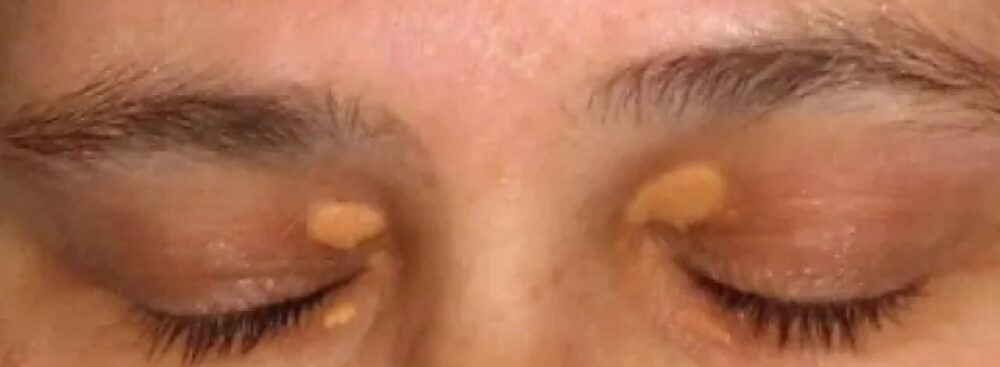Xanthelasma is a condition characterized by yellowish, raised lesions or bumps that appear on the skin around the eyes. These bumps are usually flat and painless and may be present on one or both eyelids. Xanthelasma is a type of xanthoma, which is a deposit of fat in the skin.
Root Cause for Xanthelasma:
The exact cause of xanthelasma is unknown, but it is believed to be associated with high levels of cholesterol and other fats in the blood. People with high cholesterol levels, diabetes, liver disease, and certain genetic conditions may be more likely to develop xanthelasma.
Xanthelasma is Harmful?
Xanthelasma is usually not harmful, but it can be a cosmetic concern for some people. Treatment options may include cholesterol-lowering medications, surgical removal of the lesions, or various cosmetic procedures such as chemical peels or laser therapy.

Cosmetic Treatment Options:
There are a few treatment options for xanthelasma, including:
- Topical treatment: Some doctors may prescribe a cream or ointment containing trichloroacetic acid or another type of acid to dissolve the plaques. However, this method can be irritating to the skin and may take several weeks or months to see results.
- Cryotherapy: This involves freezing the plaques with liquid nitrogen, which can cause the cells to break down and the plaques to fall off. However, this method may also cause scarring or pigment changes in the skin.
- Laser therapy: A pulsed-dye laser or carbon dioxide laser may be used to remove the plaques. This method is more precise than cryotherapy and may have fewer side effects, but it can be expensive.
- Surgical excision: This involves cutting out the plaques with a scalpel or other surgical tool. This method may be more effective for larger plaques, but it can also cause scarring.
It’s important to note that xanthelasma may recur even after treatment, so regular follow-up with a dermatologist is recommended. Additionally, treating any underlying medical conditions that may be contributing to the development of xanthelasma, such as high cholesterol or diabetes, may also be necessary.